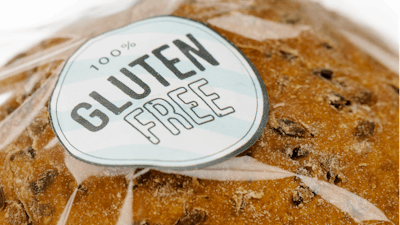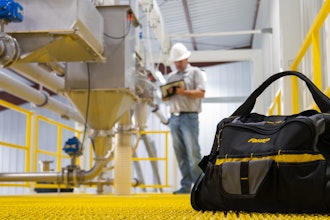
After an unprecedented decade of growth, the gluten-free market shows little sign of letting up in 2023. Last year alone, the Gluten-Free Certification Organization (GFCO) certified 9,300 products from more than 800 brands worldwide. While manufacturers are eager to capitalize on this growing market, it’s imperative to remember that a gluten-free diet is, at its core, a medical diet. With this in mind, food manufacturers must follow stringent processes for making and packaging gluten-free products from start to finish.
When the FDA mandated that foods must contain less than 20 ppm of gluten to be labeled gluten-free, many manufacturers assumed they were compliant provided their products fell under this threshold. However, this standard is in place merely to limit the presence of gluten due to unintentional cross-contact; it also means that, in addition to meeting this threshold, manufacturers must ensure they do not intentionally add any ingredients that contain gluten, no matter the quantity, at any point during the production process.
Being vigilant about starting ingredients is more important than ever thanks to the FDA’s recent rule on fermented and hydrolyzed products. Kits that test for gluten don’t work well on these products, so according to this new rule, manufacturers cannot use any gluten-containing ingredients prior to fermentation or hydrolysis.
Even ingredients that are inherently gluten-free, like oats, require attention, because they have overlapping growing seasons with wheat, barley and rye and are sown and harvested at the same time of year. Manufacturers even need to be careful with cheeses because the cultures and enzymes used during the cheese-making process are often grown on media that contain yeast or other gluten-containing components.
While the risk of cross-contact is very real, manufacturers can take the following steps to minimize exposure:
Step 1: Perform a risk assessment
The first step to producing gluten-free goods is to perform a thorough risk assessment in which you evaluate what materials you bring into your plant, assess how your production layout is currently set up, and determine whether you have the ability to dedicate the resources to making gluten-free production happen. For instance, you might need to segregate the production of gluten-free foods into a dedicated facility or area, or sequence your production—i.e. plan your production schedule so that the gluten-free manufacturing occurs all at one time.
Consolidation reduces the risk of cross-contact, as well as staff time spent cleaning. Overall, it’s important to ask: What’s at risk in switching to gluten-free production, and is there anything that needs to be done to mitigate that risk? If you’re looking for guidance on how to perform a risk assessment, the GFCO offers a standard process that is available for free on our website.
Step 2: Analyze your factory environment
While many manufacturers assume they’ll need a facility dedicated to producing gluten-free goods, it is possible to employ a mixed-use facility if you evaluate your factory environment and the goods you produce, and take proper precautions. For example, if you manufacture gluten-free flour, you would need to assess your dust control equipment and practices.
If your gluten-free production lines cross those used to produce items containing gluten, and there is the potential for airborne contamination, switching to a dedicated area to produce or package gluten-free products may be necessary. In other cases, setting up dividers or hanging curtains between production areas may be sufficient.
Step 3: Clean your equipment.
Whether you have a dedicated or mixed-use facility, it’s important to clean your equipment, because even in a dedicated facility, the potential for cross-contact always exists when bringing raw ingredients into the plant.
Gluten removal doesn’t require its own specialized type of cleaning; when setting up cleaning protocols, you can use the same methods for gluten as you would for removing other allergens. But make sure to identify any hard-to-reach places and hard-to-clean materials. For example, large, stainless-steel equipment is easier to clean thoroughly than smaller equipment, and cloth or chain-link conveyor belts are more prone to conceal food particles that contain gluten.
Step 4: Verify your equipment through testing
Once your equipment has been cleaned, you need to verify that you cannot detect any gluten on it. There are kits that test specifically for gluten or protein swabs that combine testing for gluten and other allergens. Kits that test rinse water for gluten are great for equipment that cannot be disassembled, as are other kits that simply use a cotton swab or sponge to swab equipment surfaces.
However, ATP swab kits (adenosine triphosphate) that test the cleanliness of surfaces should be avoided as they aren’t as sensitive to the presence of gluten proteins. Again, keep in mind that gluten test kits cannot accurately detect fermented or hydrolyzed gluten, so protein swabs are a better choice for environmental testing where these types of products are made.
Make sure your staff have not only been trained on cleaning procedures, but also know how to perform gluten-free verification tests, can interpret the results, and understand what steps to take if they get a positive reading. External proficiency testing and check-sample programs can help with training and verification. At GFCO, we require manufacturing plants to participate in gluten proficiency testing at least once every four years.
With demand for gluten-free products expected to grow at an annual compound rate of 9.8% over the next decade, it is vital that manufacturers analyze risk, evaluate production environments, take precautions when necessary, and clean and test equipment thoroughly.
Companies that implement these steps can produce high-quality food that is safe to eat—whether your consumers have adopted a gluten-free diet out of medical necessity or as part of a healthy lifestyle.
Laura K. Allred, Ph.D. is the regulatory manager for the Gluten Intolerance Group’s Gluten-Free Certification Organization (GFCO). Allred’s experience includes a background in immunology and eight years of directing a food testing laboratory and test kit manufacturing operation. The GFCO certification mark is the symbol of trust for the gluten-free community, with more than 60,000 products certified worldwide.
For more information, visit www.gluten.org and www.gfco.org






















